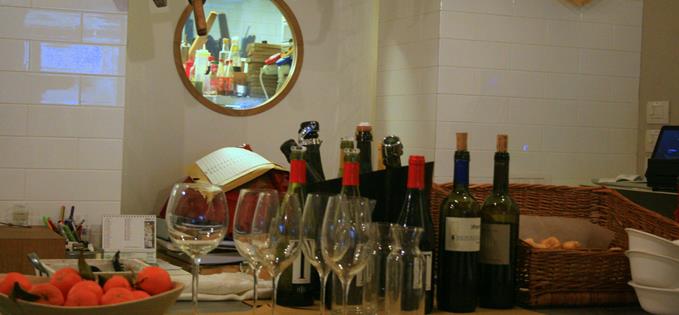From donkey erotica to a beehive shaped chamber covered in grotesque ogres
THE Italians call it La Bella Adormenetat (Sleeping Beauty). It's a World heritage Site and yet it barely registers on the tourist radar.
Tucked-away in the south-east corner of Lombardy, Mantua is a compact ancient city with an Etruscan pedigree. The poet Virgil was born hereabouts in 70BC. It’s also the setting for Verdi’s opera Rigoletto, and where Shakespeare had Romeo exiled after his to-do in Verona. But it’s the extravagant legacy of the Gonzaga family and their sumptuous 15th and 16th century renaissance monuments where Mantua really takes the biscotti.
The rise and fall of the house of Gonzaga is a classic tale. From nouveaux riche beginnings they filled their wealthy backwater fiefdom with grand architectural statements reflecting their aristocratic aspirations.
At their best, they were phenomenal patrons of the arts, employing luminaries such Tintoretto, Rubens, Mantegna and Romano. At their worst, the Gonzaga’s were an unruly bunch of megalomaniacal thugs worthy of a ‘Game of Thrones’ plot line. At their height, nothing it seems was beyond their power and they wanted for nothing.
 Grotesque frescoes in the Palazzo Te
Grotesque frescoes in the Palazzo TeAn approach from the east into Mantua is recommended and we dutifully head over the long and slender Ponte Legnano separating two of the three large medieval lakes surrounding the city. Directly ahead, seemingly floating on water is a dusky, fantasy skyline of domes, towers and red-tiled roofs all corseted by high-brick walls. Almost an island, it has barely altered or grown since its renaissance zenith.

The day starts with the Gonzaga’s Palazzo Ducale. More self-contained town than palace, this sprawling 34,000 square metre labyrinth includes a castle, gardens and 15 courtyards. It’s hard to tell where the palace ends and the rest of Mantua begins. Even the town’s biggest square, the Piazza Sordello, was originally part of the palace sprawl.
The interiors of the Palazzo Ducale on this crisp late-winter morning are relentlessly draughty and almost empty. You have to take a guided tour here, mainly because of security and partly because you’d get lost without one. Facts are machine-gunned at us by a guide who wants us to see as many of the 500 rooms as possible. Scampering along to keep up, she tells us most of the transportable treasures were sold off when things turned financially sour for the Gonzaga’s during 1600s, and that our very own Charles I was an especially keen customer. Fortunately some of the frescoes, the heavier tapestries by Raphael and vast painting by Tintoretto and Rubens survived the fire-sale on the basis that they were too big to move.
Most notable are the frescoes of Olympus and the Chariots of Day and Night, whose horses, in an ingenious illusion of perspective, seem to change direction at either end of the glittering Hall of Mirrors. Apparently another party trick of the day was to recognise the name of a horse from its body parts. There are hidden passages and doors, and even miniature apartments once thought to have housed the Gonzaga’s collection of dwarves.
From here it would normally take a 20 minute cross-town amble though arcades and narrow cobbled streets hemmed-in by old-fashioned pharmacies and food stores to our next destination, the Palazzo Te. But first there’s a diversion away from all this renaissance grandeur.

The Bibiena Theatre (detail above) may be diminutive compared with Milan’s La Scala two hours away, but it’s still a jaw-dropping piece of 18th-century Rococo with an auditorium and stage encircled by four tiers of boxes. Weeks after it opened in December 1769, the 13-year-old Amadeus Mozart played a concert here and declared it “the most beautiful theatre in the world.” Though before performing, it’s said he needed bear fat liberally applied to his fingers to stave off frostbite.
 The Palazzo Te – a pleasure palace
The Palazzo Te – a pleasure palaceWhile the Palazzo Ducale is all about a power base and the result of centuries of additions and adaptations, the Palazzo Te could not be more different. The palatial splendours here are all about “honest idleness” and the pleasures of lavish entertaining, hooking-up with the mistress and horse riding.
Built in 1535 by Giulio Romano (a pupil of Raphael) for Frederico II Gonzaga, this pleasure palace was as fashionable and outrageous as early 16th-century keepers of good taste and style would allow. It’s changed little in nearly 500 years and is a fantasy world of elaborate, sometimes eccentric architectural detail and illusion. Playful frescoes depict everything from donkey erotica to a beehive shaped chamber covered in grotesque ogres and monsters. A deliberately uneven floor was also added just to increase spectator’s disorientation.
By early evening, the daily ritual of passeggiata, (dressing in your finest and taking to the streets, bars and cafes) is under way. Mantua at night is quite the happening spot these days with a collection of earnest bars, hip literary haunts and groovy restaurants such as La Cucina.
 La Cucina – hip eaterie
La Cucina – hip eaterieNatty hangouts or otherwise, it’s good to take the weight off feet and minds and ponder if living the life of a 16th-century Gonzaga would be all that much fun? Apart from the back-stabbings, warring, diseases and all-round shorter life-span…all that decadence and debauchery? Naturalmente it would!

Fact file
Visit www.mantovatourism.it/en/ and www.italia.it/en/discover-italy/lombardy.html for general information on the city and surrounding area.
Staying
We stayed in the modern Hotel la Favorita a few kms from the centre of Mantua. The townhouse Hotel dei Gonzago offers a more centrally located option.
Getting there
The closest airport is Verona Airport is 39.9km away and serves Manchester and London Gatwick. Bergamo airport is 127km from Mantua and offers budget flights from Manchester and London Stansted.










